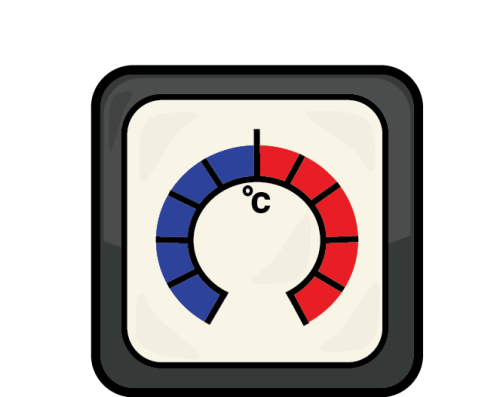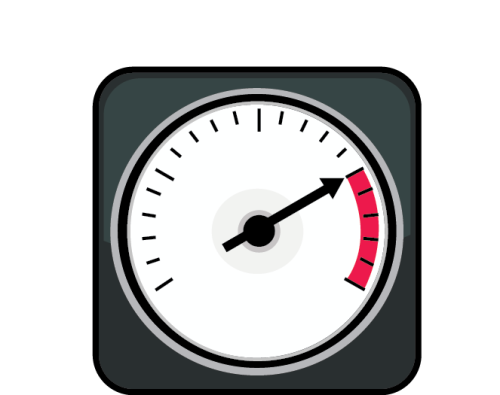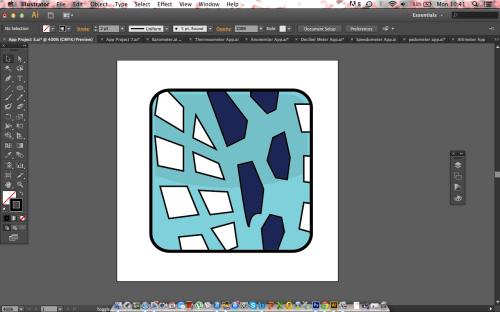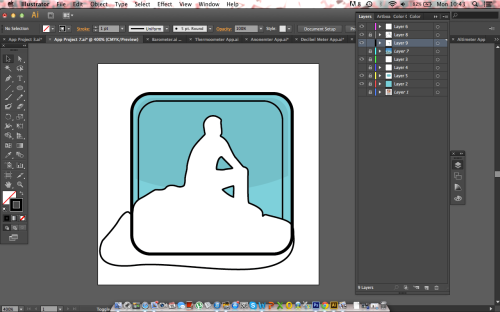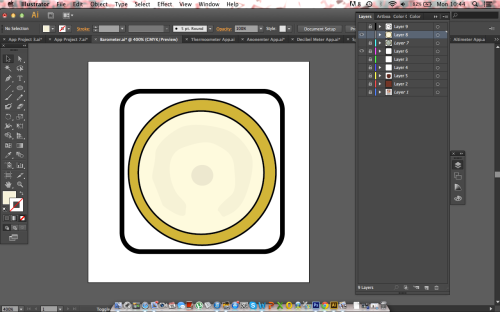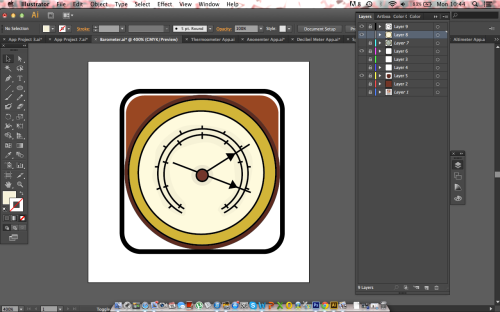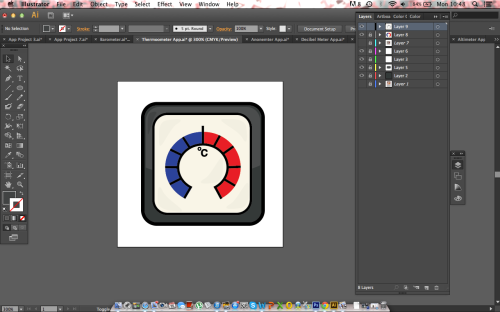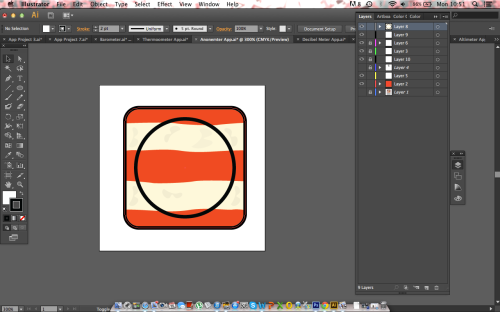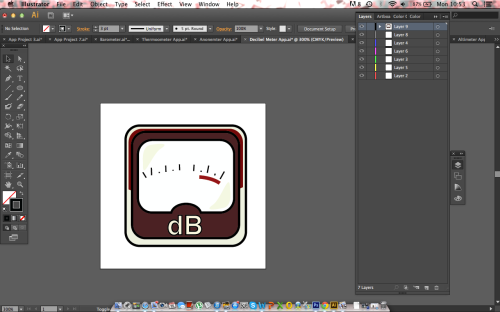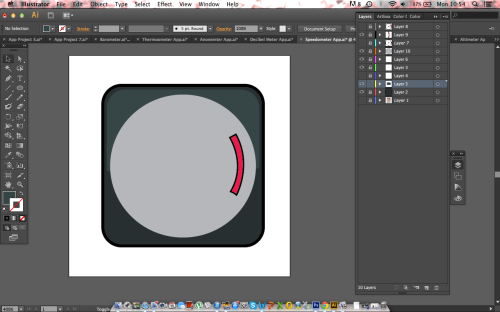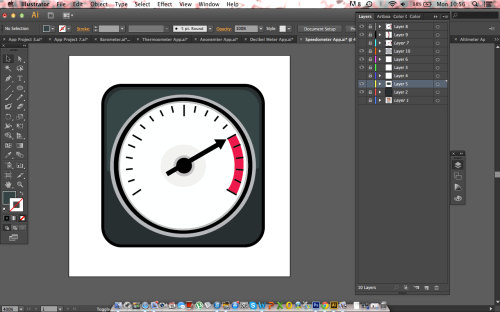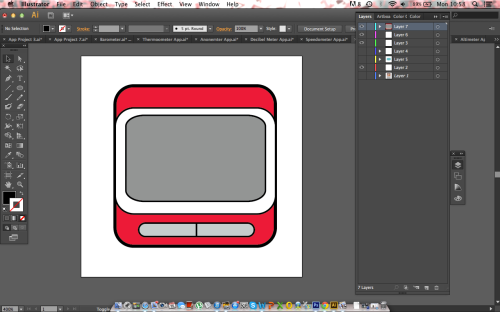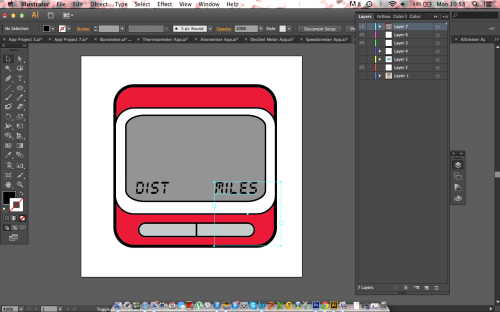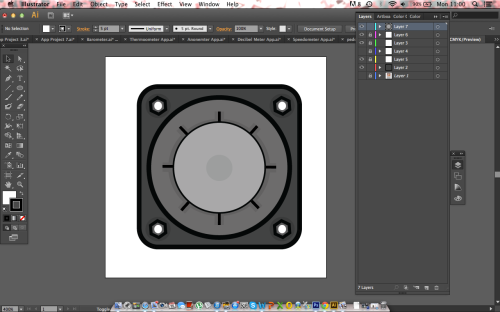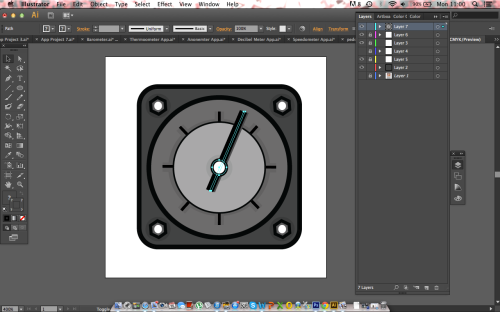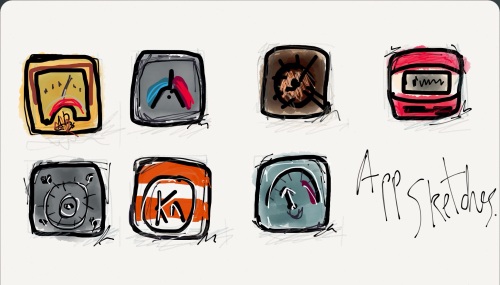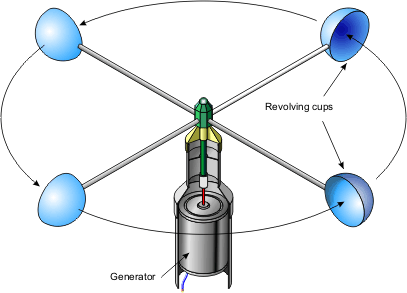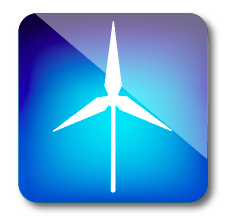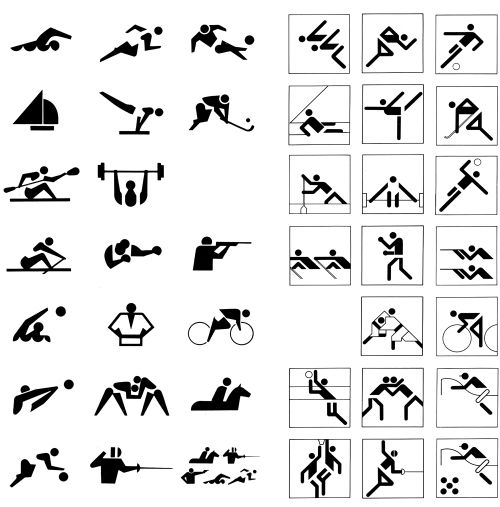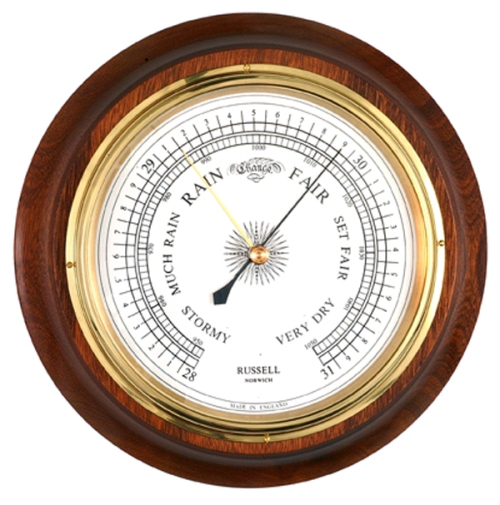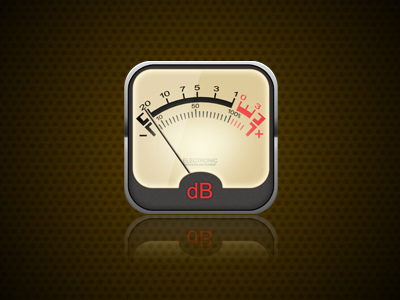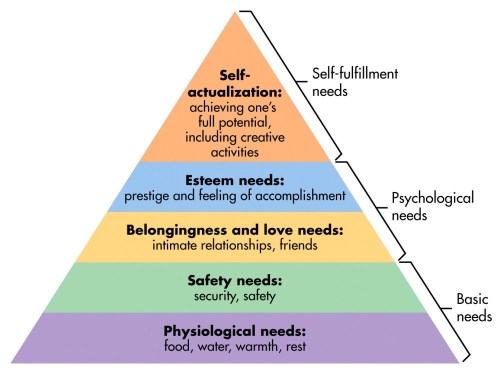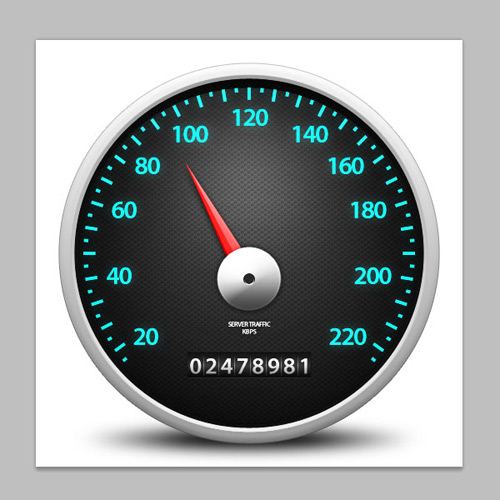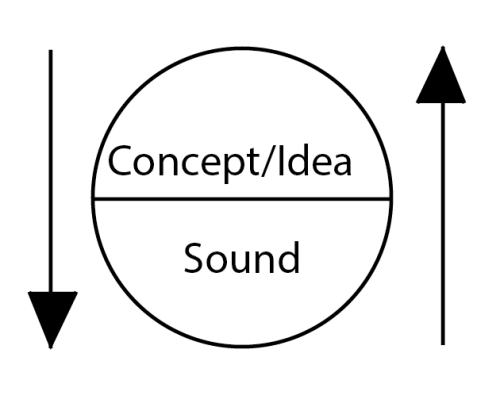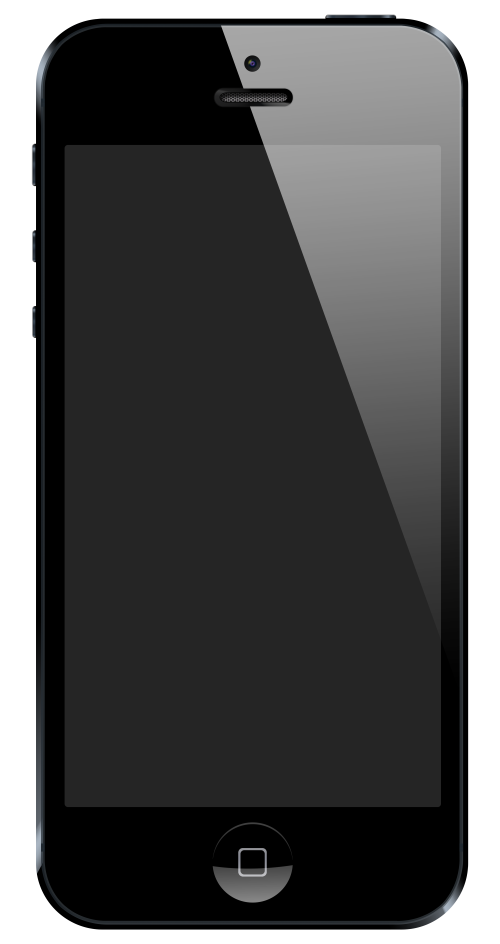Visual Communication
Explain the visual communication of each of the apps in relation to the brief:
Speedometer – The speedometer communicates very well. When anyone thinks of a speedometer the image they get in their head is of the classic number dial with the arrow that points at the speed that is being registered. This is why I have gone with the design that I have, the icon needs to relate a message to the user every time they see it, so they know its purpose straight away. This icon that I have designed is a simplified version of the classic speedo that everyone knows and recognises. Therefore it works well both in visually communicating a message to the iPhone user, but also at working in a small size and confined space. The colour schemes are nice and bold and help to exaggerate the importance of the speedo by the bright contrasting white dial, which will also help users to quickly notice and then recognise the purpose of the app.
Anemometer – The anemometer was a tricky one but I feel it has turned out well in the end. I started out by designing an icon that used the circular fan at the top of a real anemometer as its center feature but soon found out that this would be too difficult and complex a design to work well in a small box suitable for an iPhone. Therefore I had to change tack and went down a totally different route that I feel has ended up with an icon that communicates the message as well as, if not better than my original idea. I have used an orange and white striped effect to replicate that of a windsock. I thought this was a great idea as the colours make the icon stand out while at the same time being relevant as a wind sock signifying a real life way of judging wind speed. On top of this background I have added ‘Kn’ which is the unit for wind speed, which will again help to make the purpose of the app clear and eye catching to any iPhone users. I feel the icon works very well because of this.
Altimeter – I am particularly happy with the final design that I have come up with for the altimeter, I feel the visual communication is strong and that the icon is easily recognisable for the iPhone user. This idea was a simple one but one that seemed obvious to me. If you do a Google image search on the term altimeter what comes up is a whole host of images depicting altimeter watches and readers, all of which have the same rugged look and style, which is obviously to make them suitable for use up mountains and in the outdoors. I therefore wanted to recreate this dark, rugged style within the small box provided for the icon. The altimeter faces are often very complex with loads of numbers and terms, so it was important that the first step I took was to simplify this right down and strip it back to its bear bones. Once I had done this I produced a really simple yet effective icon that represents the real thing very well, and because of this the user will be able to recognise and find the app easily. This indicates that the visual communication is strong and that it should work very well.
Barometer – The barometer was again a simple choice for me; one that I feel has worked well and communicates the message to the user successfully. I didn’t want to go down the route of using clouds or rain to attempt to communicate that the app was a barometer, but to actually use a simplified app sized version of the real thing. I don’t feel that any other design other that that of a real barometer conveys that it is a barometer anywhere near as clearly. Although the app will have its name underneath the icon, the idea should be to try and make it obvious to the user what the app is without relying on that description. It should work in isolation, something that I feel each of my icons do. I simplified and reproduced a classically styled barometer and used this for my icon, it works well and visually communicates the message effectively.
Decibel Meter – As with all of the icons I have produced I feel that the best way to represent decibel meter, is to show a decibel meter itself. I wanted a really nice classic looking decibel meter, something that was attractive and nicely styled while also conveying and visually communicating to the user that it was a sound measuring device. The creamy white colour works well with the nice deep reds that I have used, I spent a fair amount of time picking a colour scheme that would be eye catching but classy and classic looking at the same time. As with each of the other icons I have reduced all of the numbers and text from the screen, thus making it easier on the eye for the user as well as insuring that it will work at a tiny size. The only type on the icon is ‘Db’ which is positioned in a large size at the bottom of the icon. ‘Db’ clearly stands for decibel and is another good feature that helps to communicate the message of the app to the user. I feel that it works well in doing so.
Pedometer – The pedometer was another one that took me a while to come up with an idea that I was confident with. What I have gone for is, once again, a representation of a real life pedometer, as I feel there if no better way of visually communicating the message of the app to the iPhone user. I toyed with the generic idea of using a shoe, for footsteps, but decided against this as without the description of the app below the purpose of the app wouldn’t be clear at all. The app sized version of a real life pedometer works very well. The colours that I have used make the icon stand out and eye catching for the user, something that is very important when the app icon is competing in a crowed iPhone screen. The pedometer is already a simple product, so there was not a lot that I needed to cut down, but even so I feel I have got the balance right and that it works well. This is an idea that I haven’t seen done before, so I’m happy with what I have produced.
Thermometer – A thermometer is something that is very well known, and almost everyone would know what the app is if the blue and red, hot and cold combination was used effectively. The traditional thermometer is one that is a long, thin glass tube with the rounded section at the bottom. So I wanted to use this style of thermometer, however when it came to creating an effective icon using this type I found it difficult due to the long thin shape fitting the square box. So I went back to the drawing board and found a better version of the thermometer that was circular and I found works very well. I removed all the unnecessary type got rid of numbers and so on, making its simpler to insure that it works well at a small size. The only type is the ‘C’ that’s in the center of the app which will make it clear beyond doubt that the purpose of the app is to measure heat. Therefore I feel that I have succeeded in visually communicating the purpose of the app while also creating a stylish and nicely designed piece of work.



